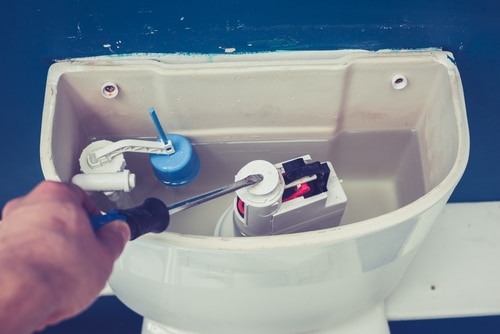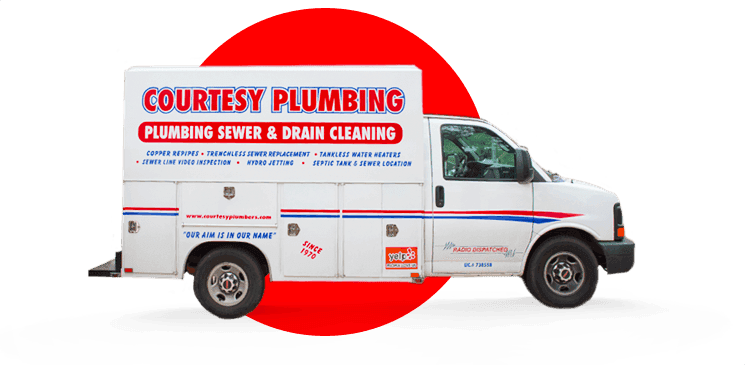Running toilets can be a frustrating and wasteful problem to deal with. Not only does it result in a constant flow of water, but it can also significantly increase your water bills. Fortunately, with a bit of knowledge and some basic troubleshooting, you can identify and fix a running toilet on your own. In this article, we’ll guide you through the process step by step, ensuring that you regain control over your bathroom fixtures.
Understanding the Problem
1. What Causes a Running Toilet?
A running toilet occurs when water from the tank continuously flows into the bowl, even when it’s not being flushed. Several issues can lead to this problem, including:
- Worn-out flapper: The flapper is a rubber seal that allows water to flow from the tank to the bowl during flushing. Over time, it can deteriorate or become misaligned, resulting in a constant water leak.
- Faulty fill valve: The fill valve controls the water level in the tank. If it fails to shut off properly, water will continue to flow.
- Improper chain length: The chain that connects the flush handle to the flapper can be too short or too long, preventing the flapper from sealing properly after a flush.
2. Detecting a Running Toilet
Identifying a running toilet is relatively easy. Here are a few signs to watch out for:
- Audible water flow: If you can hear water running in your toilet even when it hasn’t been flushed recently, it’s likely running.
- Continuous tank refilling: If the tank consistently refills after flushing without anyone using it, there’s a high chance of a running toilet.
- Water stains in the bowl: Look for a faint flow of water moving down the sides of the bowl. It indicates a constant leak.
Fixing a Running Toilet
Now that we understand the causes and signs of a running toilet, let’s move on to fixing the issue. By following these steps, you can save water, money, and prevent unnecessary stress:
1. Checking the Flapper
The flapper is often the culprit when it comes to running toilets. To inspect it, follow these steps:
- Turn off the water supply: Locate the shut-off valve behind the toilet and turn it clockwise to stop the water flow.
- Remove the tank lid: Carefully lift the lid off the tank and place it in a safe location.
- Observe the flapper: Check if the flapper is properly aligned and free of any debris or mineral buildup. Look for signs of damage or warping.
- Replace or adjust the flapper: If the flapper appears damaged, it’s best to replace it with a new one. If it’s misaligned, adjust it so that it seals tightly when closed.
2. Inspecting the Fill Valve
If the flapper is in good condition, the fill valve might be causing the problem. Follow these steps to examine it:
- Flush the toilet: Push the flush handle and observe the fill valve’s operation. Ensure that it shuts off completely after the tank refills.
- Adjust the float arm: If the fill valve fails to shut off, the float arm might need adjustment. Gently bend the float arm downwards to reduce the water level in the tank.
- Replace the fill valve: If adjusting the float arm doesn’t resolve the issue, you may need to replace the fill valve entirely. Consult a professional plumber if necessary.
3. Fixing the Chain Length
In some cases, an improperly sized chain can prevent the flapper from sealing correctly. Follow these steps to address this issue:
- Turn off the water supply: Shut off the water supply as described earlier.
- Adjust the chain length: Look for the chain that connects the flush handle to the flapper. Ensure it has a slight amount of slack, allowing the flapper to close fully after each flush.
- Test the flush: Turn the water supply back on and test the flush. Ensure that the flapper seals tightly and the tank refills without any leaks.
Conclusion
By understanding the causes, signs, and fixes for a running toilet, you can easily tackle this common household issue. Regular maintenance and prompt repairs can save water, reduce utility bills, and prevent water wastage. Remember to address the problem as soon as possible to avoid potential damage to your toilet and plumbing system.
FAQs
Q1. How can I determine if my toilet is running? A: You can detect a running toilet by listening for audible water flow, observing continuous tank refilling, or noticing water stains in the bowl.
Q2. Why is my flapper not sealing properly? A: The flapper may not seal properly due to wear and tear, misalignment, or mineral buildup. It’s essential to inspect and replace the flapper if necessary.
Q3. Can I fix a running toilet on my own? A: Yes, with basic troubleshooting skills, you can fix a running toilet. By following the steps outlined in this article, you can identify and resolve common issues.
Q4. What should I do if adjusting the float arm doesn’t work? A: If adjusting the float arm doesn’t solve the problem, you may need to replace the fill valve. Contact a professional plumber for assistance if needed.
Q5. How often should I perform maintenance on my toilet to prevent running issues? A: It’s a good practice to conduct routine toilet maintenance at least once a year to identify and address potential running toilet issues before they worsen.



